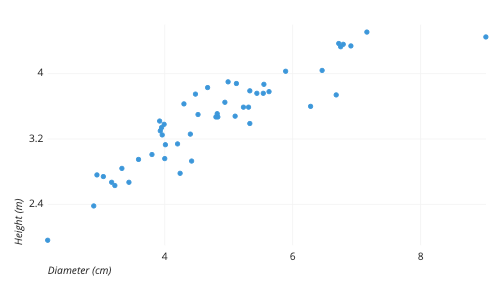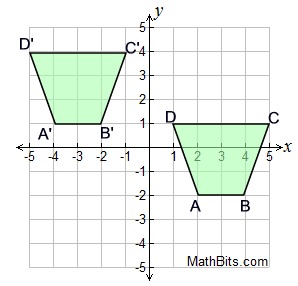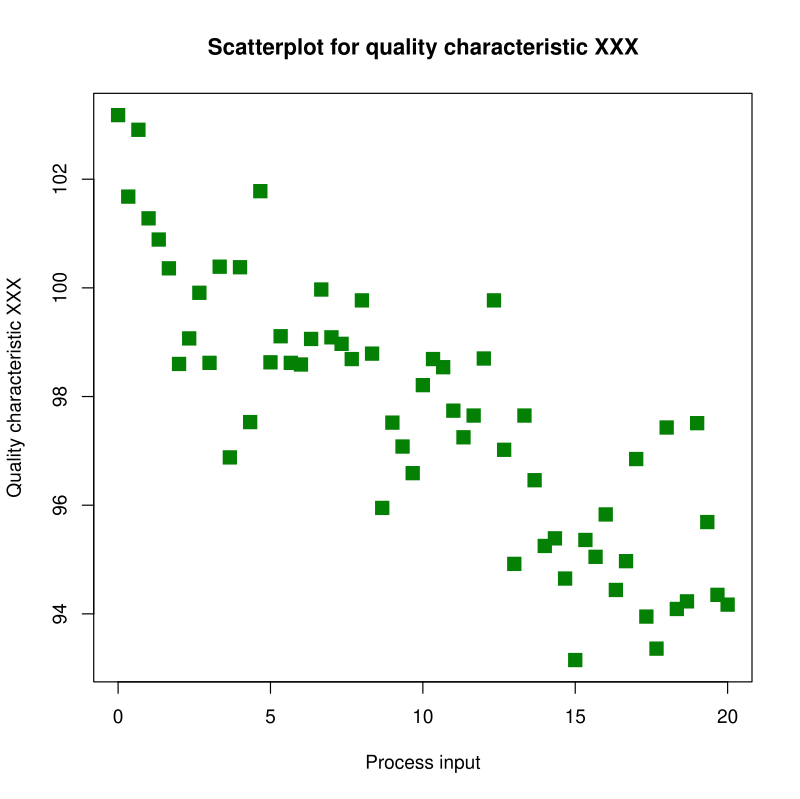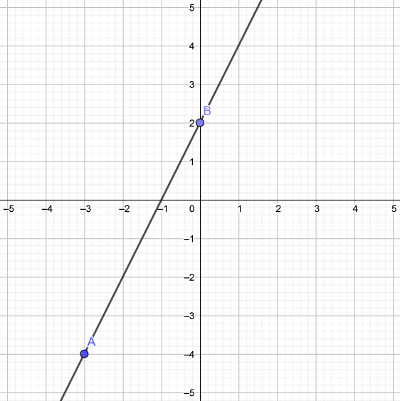What is the relationship between cylinder and a cone? (Hint: can be a ratio)
1:3
A cone is 3 times smaller than a cylinder. A cylinder is 3 times larger than a cone.
How would you describe this graph’s association?
Positive linear association
What is the difference between 7th and 8th grade equations?
7th grade equations were written as
y = kx (proportional)
8th grade equations are written as
Y = Mx + b (non-proportional)
What is this called? (What does it mean?)

A transversal. It is a line that cuts through two parallel lines to give us angle relationships:
Supplementary angles: add to 180. These are the ones that are not equal.
Alternate Interior: they are angles that are opposite of one another and look to the inside of the transversal. They are also equal.
Alternate exterior: they are angles that are opposite of one another and look to the outside of the transversal. They are equal.
Vertical angles: two angles directly across from one another. They are also equal.
Corresponding angles: on the same side of the figure. They have the same angle opening and therefore are equal.
List all the rigid and non-rigid transformations. Be sure to explain which category they are in and what they do to the graph.
1. Reflection. The figure reflects over a line of symmetry, usually the x or y axis, but could be a line like y=3 or x=4. The figure SHOULD NOT change shape or size.
2. Translation. The figure will move left, right, up or down. You will have to be specific about the units. The figure again SHOULD NOT change shape or size
3. Rotation. The figure will turn on the graph either 90 degrees or 180 degrees. Direction is important. It can rotate around the origin, counterclockwise or clockwise. The figure again SHOULD NOT change the shape or size.
There is 1 non-rigid transformation:
Dilation. When the shape is dilating, it is getting bigger or smaller by a certain scale factor. If the scale factor is larger than 1, then the shape will get bigger. If the scale factor is smaller than one (think fractions 1/2,1/3,1/4) then the shape gets smaller. If you are comparing, you do the copy divided by the original - COPY / ORIGINAL
Going from the original to the copy you multiply
Going from the copy to the original you divide
What is the volume of a cylinder with a height of 5 and a radius of 10?
500pi
How do you know when something is not a function for an:
Equation / Function
Graph (what test is used?)
Table
X = a number
On a graph, if I can drop a vertical line and it hits more than one point on the function
There will be more than one x that repeats to a different yWhat is the slope of the line that crosses through (3,7) and (6,10)?
The slope is 1.
10-7 = 3
6-3 = 3
3/3 = 1
What are all of the exponent laws and what do they do? (Hint there are 5 of them)
Product Rule: keep the base, add the exponents
Quotient Rule: keep the base, subtract the exponents
Power Rule: keep the base, multiply the exponents (the one with parenthesis)
Negative Rule: take the reciprocal of the base (if it’s x^-2, it’s now 1/x) and then make the exponent positive and still connected to the variable (1/x^2)
Zero Rule: anything raised to the power of 0, is equal to 1. UNLESS, zero is raised to the power of 0, then that is undefined.
 What transformation is this? (Give specifics on how to solve)
What transformation is this? (Give specifics on how to solve)
Translates 6 to the left and 3 up.
Make sure the one with the primes is NOT where you are starting no matter where it is on the graph (unless you are told to FIND the original)
What is the volume of a cone that has a radius of 40 and a height of 15?
8000pi
Describe in context of the graph, what type of association is happening.

As the process input increases the quality characteristics decrease.
What is the equation of this line? Is it proportional or not?

Y = 2x + 2
What are all the other angles equal to? 
Angle 1: 55 degrees (supplement of angle 2)
Angle 2: 125 degrees (given)
Angle 3: 55 degrees (supplement of angle 2)
Angle 4: 125 degrees (vertical angle from angle 2)
Angle 5: 55 degrees (alternate interior angle from angle 3)
Angle 6: 125 degrees (corresponding angle of angle 2)
Angle 7: 55 degrees (alternate exterior angle from angle 1)
Angle 8: 125 degrees (whatever relationship you want)
What are the 3 solution types? Provide 1 example of each.
No Solution / parallel lines
3x + 4 = 3x + 5
(Slope is the same, y intercept is different)
One solution / 2 lines that intersect
10x + 1 = 6x -7
(Everything is different, unless the special case where the y intercepts can be the same and then they are the answer)
YOU HAVE TO SOLVE
Infinite Solution / the lines overlap
8 (2x+6) = 4(4x + 12)
When solved, both sides are equal (same slope and y intercept)
What is the difference in the volume of a cylinder that has a height of 8 and a radius of 7, and a cone that has a height of 6 and a radius of 3? (nearest tenth, use 3.14 as an approximation of pi )
Cylinder: 1230.88
Cone: 56.52
Cy- Co = 1174.36 = 1174.4
Please explain whether these are a function or not:
A. Is a function. The x’s are mapping to only 1 y
B. Is not a function. Coordinate C is mapping to two different y values. Therefore when x repeats to more than one y, it is not a function.
C. Is a function. Even though there is a y repeating, it is only not a function when x repeats to a different y.
What is the equation of a line that passes through the points (15,34) and (45, 22)?
22-34 = -12
45-15 = 30
-12/30
Y = -0.4x + b
Plug in a point
34 = -0.4(15) + b
34 = -6 + b
40 = b
Y = -0.4x + 40
What is the measure of the angle at the bottom of the picture? 
Because they are alternate exterior angles, the two angles are equal to one another.
5x+18 = 8x-12
+ 12. +12
5x + 30 = 8x
-5x. -5x
30 = 3x
X = 10
So the measure of the angle is 68 degrees because 5(10)+18 = 68
12(x+3) = 4(x+5) + 16
12(x+3) = 4(x+5) + 16
12x + 36 = 4x + 20 + 16
12x + 36 = 4x + 36
12x = 4x
X = 0
(The special case!!!, this wasn’t on purpose)
A sphere and a cylinder share the same radius. The volume of the sphere is 972pi. What is the volume of the cylinder with a height of 12?
972pi
(lol, this was actually a coincidence)
Fill out the remaining boxes in the frequency table. (Be mindful of the total)

All the numbers that are blank have to be divided by 450 and rounded to the nearest hundredth.
Males / Fly = 51/450
Fly total = 100/450
Female / freeze = 60/450
Male / freeze = 71/450
Invisibility / Female = 48/450
Invisibility / Male = 27/450
YOU GET THE POINT
State which equation is linear or not.
A. Y = x^3
B. 2x = y + 3
C. 5y - 4x = 10
D. Y = |x| - 5
E. Y = 2x (x+4)
A. Non - Linear. The exponent is raised to the 3rd power, therefore it is not constant.
B. Linear - both x and y have an exponent of one, so it is constant
C. Linear - both x and y have an exponent of one, so it is constant
D. Non- linear - the x is in absolute value and therefore not constant
E. Non-linear - when distributed the exponent of x would be a 2, which is not constant
Answer Questions 4 and 5 using the laws:
4. 0.8xy^11 (you could also use 4/5)
This question only uses quotient rule so x^3 / x^2 = x^3-2 = x^1 or x
Y^16 / y^5 = y^16-5 = y^11
5. 8x^9y
The first thing you can notice is that the x exponents can be combined because of product rule. So 24x^2 * 2x^8 = 48x^10
The new numerator is 48x^10y^3
The denominator stays the same
48/6 = 8
X^10 / x = x^10-1 = x^9
Y^3 / y^2 = y
Put it all together you get 8x^9y
8(x+4) + 12 = 4x +32
Solve for x
8x + 32 + 12 = 4x + 32
8x + 44 = 4x + 32
4x + 44 = 32
4x = -12
x = -3
